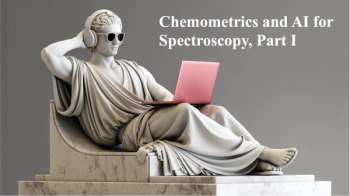
Rice Quality Evaluated Using Raman Spectroscopy and Multivariate Analysis
Scientists from Hirosaki University Graduate School of Science and Technology in Japan evaluated the eating quality of white rice samples using Raman spectroscopy.
A group of scientists led by Sohei Yamada of Hirosaki University Graduate School of Science and Technology in Aomori, Japan is evaluating the eating quality of white rice samples using Raman spectroscopy. Their findings were published in the Journal of Raman Spectroscopy (1).
According to the Penn State Department of Food Science, the quality of food is determined by its chemical, physical, and microbiological characteristics (2). Altogether, these factors can determine a food’s safety, acceptability, and economic value (2). Good-quality rice is often believed to make someone feel full more quickly than poor-quality rice, so being able to determine the quality and safety levels rice samples can be beneficial to the average consumer (3).
For this experiment, a 532 nm excitation beam was used in conjunction with multivariate calibration. This allowed for correlations to be established between spectra features and the results of normal sensory tests, with the scientists hoping to establish calibration models following the experiment. Each model’s accuracy was confirmed based on their associated coefficients of determination (R2), root-mean-square errors of calibration, and the root-mean-square errors of prediction values.
The eating quality of the rice samples was measured using models based on partial least squares regression, which provided reasonable predictions (R2 > 0.8). Additionally, the components affecting total evaluation were studied using the variable importance in projection technique. The results showed that starch, amylose, amino acids, glucans, carbohydrates, and proteins were all factors that helped determine the quality of white rice.
References
(1) Yamada, S.; Saito, K.; Maeda, H.; Kanda, S.; Uemara, T.; Ogawa, T.; Wada, S.; Hanada, Y. Evaluation of Eating Quality of White Rice Using Raman Spectroscopy with Multivariate Analysis. J. Raman Spectrosc. 2023. DOI:
(2) Food Quality. The Pennsylvania State University 2024.
(3) Custodio, M. C.; Cuevas, R. P.; Ynion, J.; Laborte, A. G.; Velasco, M. L.; Demont, M. Rice Quality: How Is It Defined by Consumers, Industry, Food Scientists, and Geneticists? Trends Food Sci. Technol. 2019, 92, 122–137. DOI:
Newsletter
Get essential updates on the latest spectroscopy technologies, regulatory standards, and best practices—subscribe today to Spectroscopy.





